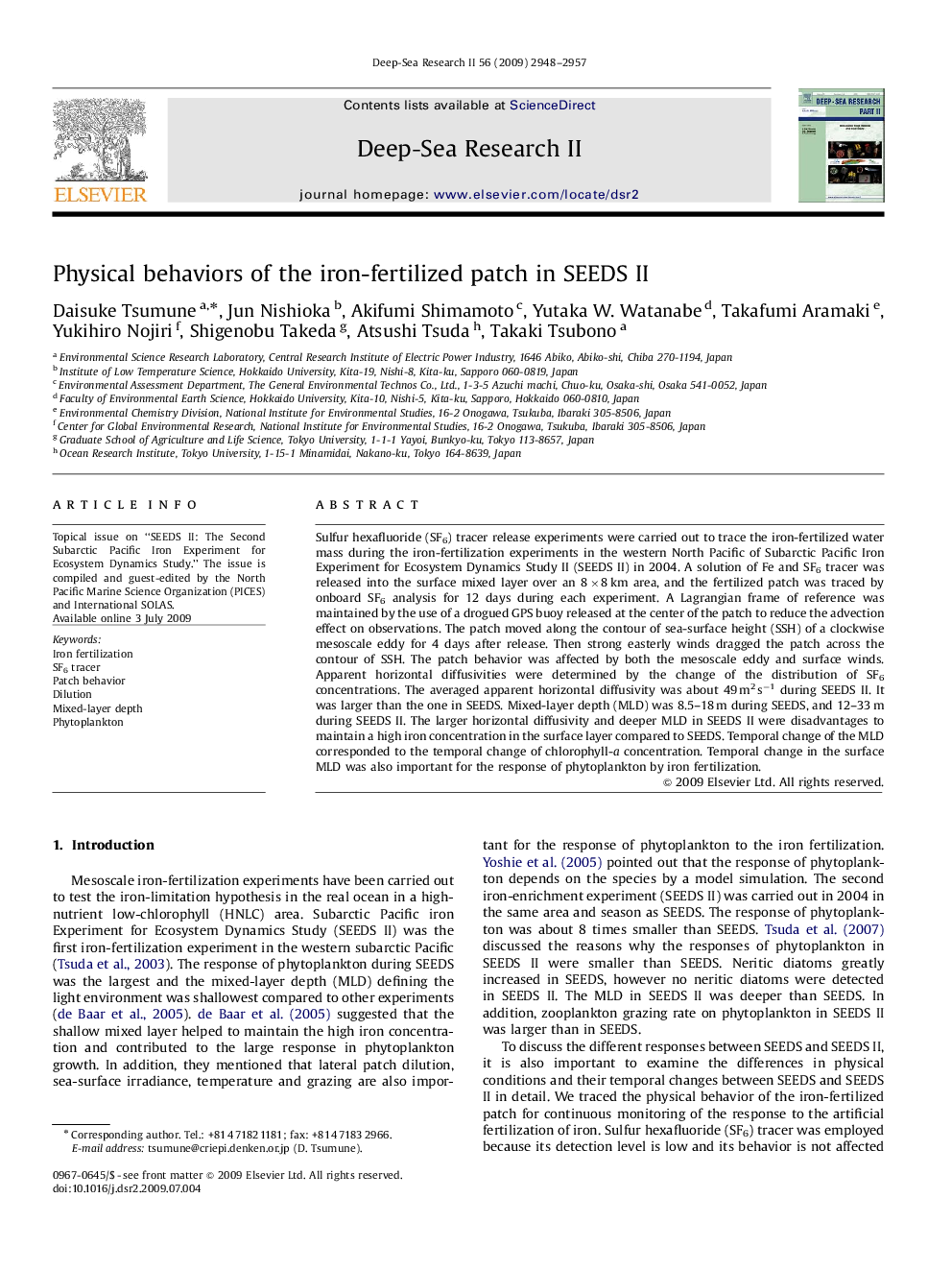| Article ID | Journal | Published Year | Pages | File Type |
|---|---|---|---|---|
| 4537712 | Deep Sea Research Part II: Topical Studies in Oceanography | 2009 | 10 Pages |
Sulfur hexafluoride (SF6) tracer release experiments were carried out to trace the iron-fertilized water mass during the iron-fertilization experiments in the western North Pacific of Subarctic Pacific Iron Experiment for Ecosystem Dynamics Study II (SEEDS II) in 2004. A solution of Fe and SF6 tracer was released into the surface mixed layer over an 8×8 km area, and the fertilized patch was traced by onboard SF6 analysis for 12 days during each experiment. A Lagrangian frame of reference was maintained by the use of a drogued GPS buoy released at the center of the patch to reduce the advection effect on observations. The patch moved along the contour of sea-surface height (SSH) of a clockwise mesoscale eddy for 4 days after release. Then strong easterly winds dragged the patch across the contour of SSH. The patch behavior was affected by both the mesoscale eddy and surface winds. Apparent horizontal diffusivities were determined by the change of the distribution of SF6 concentrations. The averaged apparent horizontal diffusivity was about 49 m2 s−1 during SEEDS II. It was larger than the one in SEEDS. Mixed-layer depth (MLD) was 8.5–18 m during SEEDS, and 12–33 m during SEEDS II. The larger horizontal diffusivity and deeper MLD in SEEDS II were disadvantages to maintain a high iron concentration in the surface layer compared to SEEDS. Temporal change of the MLD corresponded to the temporal change of chlorophyll-a concentration. Temporal change in the surface MLD was also important for the response of phytoplankton by iron fertilization.
